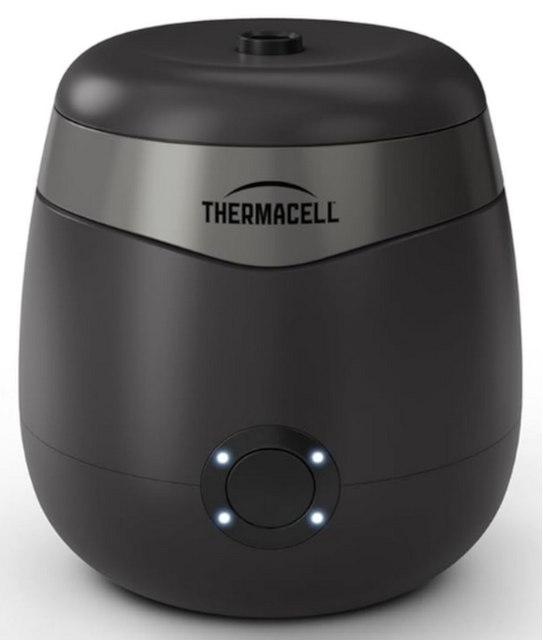I bought a mosquito repeller that was highly recommended on the Wirecutter.

I’m quite susceptible to bites, though not as much as I once was. The mosquitoes around the island place aren’t as thick as in the full tropics, and I can enjoy hanging out on my back deck as long as there is a light breeze. No breeze, however, and I am quickly driven indoors. The idea of creating a 20’ mosquito-free dome is attractive.
Though it looks to be an electronic device (in fact, I have a couple of Bluetooth speakers that look remarkably similar), it’s actually electrochemical. It includes a cartridge that, with heat and a fan, disperses a fine mist that repels the pesky insects. Of course, my family and I will be breathing that mist, so what is it?
A little research revealed that the chemical element is actually a fairly new (2007) insecticide (metofluthrin). Thermacell is not terribly forthcoming about that. They refer to it as “the repellent” and note that it’s EPA approved and “is friendly” to pets and people. I suspect that, at the density created by the device, it isn’t even insecticidal for the mosquitoes; it simply repels them.
There are a number of diseases spread by mosquito bites. Most famously malaria, but also west nile virus, the equine encephalopathies, and others. Protecting one’s self from bites has health benefits, but are they outweighed by the risk of breathing the insecticide? The US Environmental Protection Agency has decided that the doses produced by the mosquito repeller are low enough that they aren’t toxic to humans. They have published a fact sheet (pdf).
I suspect the low exposure is worth it for the convenience and health benefits of keeping the bugs at bay, and is almost certainly better for the environment than spraying pesticidal doses of chemicals around the yard. But I’m left with this question: if I’m sitting in a cloud of insecticide that mosquitoes choose to avoid, which of us is smarter?
—2p